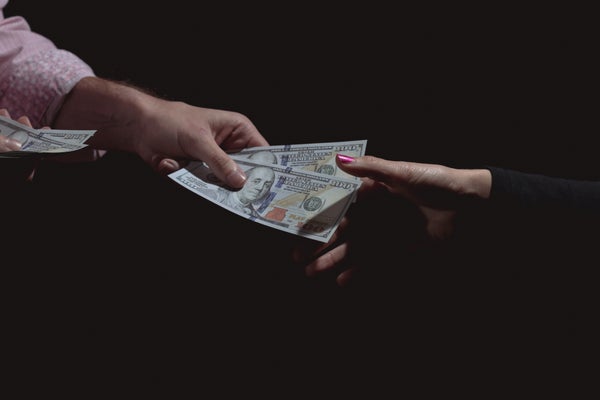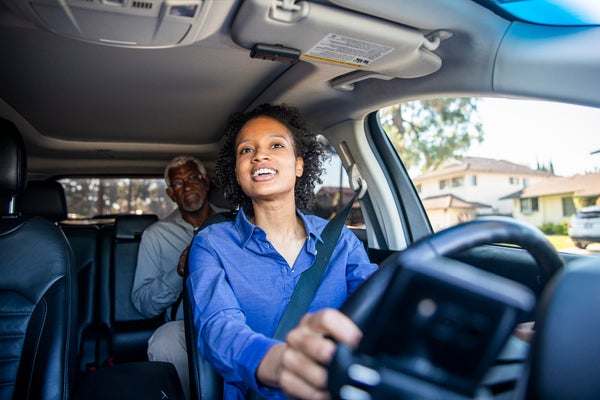When considering your financial health, debt is something that is unavoidable to address.
Debt includes balances on any type of loan you have taken out such as credit cards, mortgages, student loans, or car payments. It can also be in the form of medical bills or snowball once you become behind on your bills. Debt is an arrangement that occurs when one borrows money under the condition that it will be paid back at a later time, often with interest.
However, not all debt is bad. Debt can also help you gain credit or be considered an investment. Owning a credit card and keeping a balance you can afford to pay off each month is a great way to build credit. It let’s lenders know that you pay your bill on time and are trustworthy to provide you with a loan. Nevertheless, when you carry a lot of debt, it can affect your ability to save or even live your life. Your debt to income ratio allows lenders to measure your ability to pay back your loans. The Federal Reserve considers 40% a stressful debt to income ratio—a low debt to income ratio is considered about half of this. If you have a high debt to income ratio, don’t worry.
We spoke with Financial Consultant, Aisha Taylor, the Founder of FNPhenomenal on 5 ways to financially free yourself for debt free living!
01
Know your starting point
You can’t change what you don’t know and while debt can feel scary, it’s imperative to know where you are if you want to change it. Taylor reasons, “Know that where you are is where you are. It’s neither good nor bad. Think of it like a GPS. In order to calculate your route to get to your destination, you must know where you are starting. The same is true with getting debt free.” Taylor recommends starting by accessing your credit report from AnnualCreditReport.com—this pulls from the 3 major credit bureaus: Experian, TransUnion, and Equifax. While this is a great start, she warns that it will not include everything, “Check your mail and email for statements including medical debt, past due accounts, and other outstanding debt. Next, check your bank statements to see where you have been making payments towards debt and include those items. Last, include people whom you have borrowed money from.” You’ll have a good idea of your total debt and and can begin thinking about repayment options.
02
Create a debt pay-off plan
Now that you know your debt, the next step is taking action and figuring out how you are going to pay it off. Taylor suggests that you “rank your debt by smallest to largest. I recommend smallest to largest because debt repayments are a long term process and it is important to maintain the momentum necessary to accomplish debt freedom.” Once you rank your debt, then decide how much extra you will pay on the minimum payment of your smallest balance. She encourages, “Even an extra $5 on your monthly payment matters. For example, I added $5 a month to my student loan payment and it took 2 years off my payment.” Little changes add up to big differences. Once you pay off your smallest debt, move on to doing the above formula with the next debt and repeat until all of your debt is paid off.
03
Use your “windfalls” to help pay off debt
Taylor defines windfalls “as any extra income outside of your standard, regular income.” This includes your stimulus check, tax returns, birthday money, and more. She shares, “If you receive a windfall, then decide how much you would like to use to pay towards your debt. If it is a debt that accumulates interest, then request to have the extra payment applied to the principal.” This method will help you inject an additional deduction in your debt, lowering your principal, meaning you’ll pay less interest (and ultimately less money). While it can be tempting to blow bonus money on a vacation or nice dinner, remember your responsibilities and financial goals. Think long-term!
04
Earn extra income
Do you have a skill or hobby you can monetize? Your talents can help get you out of debt! Taylor reveals, “One of the fastest ways to become debt free is earning extra income and then using that money to pay off your debt.” You don’t even have to monetize a skill set, you can pick up extra work with a rideshare program or another service. Taylor shares, “My sister used this strategy. She did meal delivery for a few hours per day on her days off from work and used the money to pay off all her credit card debt and her car note.” It’s understandable if you don’t want to work on your days off (we all need time to recharge), so another method is adjusting your lifestyle to save more money. Taylor recommends, “If you receive a raise at work, keep your lifestyle and current costs the same and use the extra income to pay off your debt.”
05
Adopt a long-term mindset
Becoming debt free doesn’t always feel good in the short term. Making changes to improve your financial health will be liberating in the long run. Taylor admits, “There may be items that you stop buying or activities you temporarily stop or alter to free up money to pay towards your debt. Sometimes the adjustment can feel hard.” However, preventing yourself from buying a $5 Starbucks coffee everyday and making it at home and using that same $5 to pay off one of your debts, will reap you long-term rewards, including a higher credit score. But what do you do to stay motivated in the short term? Taylor recommends celebrating “the small wins along the way.” She adds, “Find joy in the process knowing that you are building a better financial future.”
The post Break the Cycle: 5 Tips To Debt-Free Living appeared first on Essence.








0 Commentaires